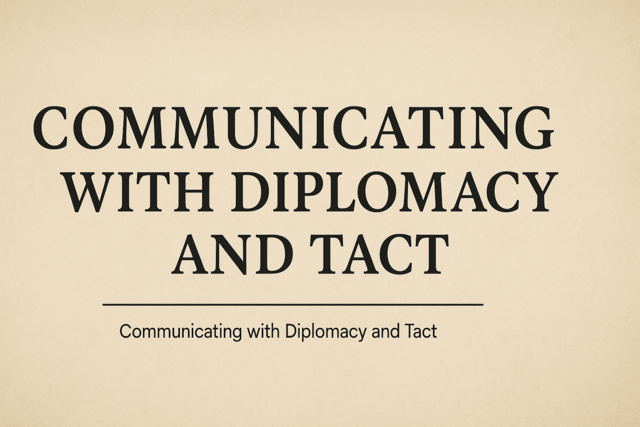Types of Case Studies
There are several different types of case studies, as well as several types of subjects of case studies. We will investigate each type in this article.
Different Types of Case Studies
There are several types of case studies, each differing from each other based on the hypothesis and/or thesis to be proved. It is also possible for types of case studies to overlap each other.
Each of the following types of cases can be used in any field or discipline. Whether it is psychology, business or the arts, the type of case study can apply to any field.
Explanatory
The explanatory case study focuses on an explanation for a question or a phenomenon. Basically put, an explanatory case study is 1 + 1 = 2. The results are not up for interpretation.
A case study with a person or group would not be explanatory, as with humans, there will always be variables. There are always small variances that cannot be explained.
However, event case studies can be explanatory. For example, let's say a certain automobile has a series of crashes that are caused by faulty brakes. All of the crashes are a result of brakes not being effective on icy roads.
Think!
What kind of case study is explanatory?
Think of an example of an explanatory case study that could be done today
When developing the case study, the researcher will explain the crash, and the detailed causes of the brake failure. They will investigate what actions caused the brakes to fail, and what actions could have been taken to prevent the failure.
Other car companies could then use this case study to better understand what makes brakes fail. When designing safer products, looking to past failures is an excellent way to ensure similar mistakes are not made.
The same can be said for other safety issues in cars. There was a time when cars did not have seatbelts. The process to get seatbelts required in all cars started with a case study! The same can be said about airbags and collapsible steering columns. They all began with a case study that lead to larger research, and eventual change.
Exploratory
An exploratory case study is usually the precursor to a formal, large-scale research project. The case study's goal is to prove that further investigation is necessary.
For example, an exploratory case study could be done on veterans coming home from active combat. Researchers are aware that these vets have PTSD, and are aware that the actions of war are what cause PTSD. Beyond that, they do not know if certain wartime activities are more likely to contribute to PTSD than others.
For an exploratory case study, the researcher could develop a study that certain war events are more likely to cause PTSD. Once that is demonstrated, a large-scale research project could be done to determine which events are most likely to cause PTSD.
Exploratory case studies are very popular in psychology and the social sciences. Psychologists are always looking for better ways to treat their patients, and exploratory studies allow them to research new ideas or theories.
Multiple-Case Studies or Collective Studies
Multiple case or collective studies use information from different studies to formulate the case for a new study. The use of past studies allows additional information without needing to spend more time and money on additional studies.
Using the PTSD issue again is an excellent example of a collective study. When studying what contributes most to wartime PTSD, a researcher could use case studies from different war. For instance, studies about PTSD in WW2 vets, Persian Gulf War vets, and Vietnam vets could provide an excellent sampling of which wartime activities are most likely to cause PTSD.
Think!
If a multiple case study on vets was done with vets from the Vietnam War, the Persian Gulf War, and the Iraq War, and it was determined the vets from Vietnam had much less PTSD, what could be inferred?
Furthermore, this type of study could uncover differences as well. For example, a researcher might find that veterans who serve in the Middle East are more likely to suffer a certain type of ailment. Or perhaps, that veterans who served with large platoons were more likely to suffer from PTSD than veterans who served in smaller platoons.
Intrinsic
An intrinsic case study is the study of a case wherein the subject itself is the primary interest. The "Genie" case is an example of this. The study wasn't so much about psychology, but about Genie herself, and how her experiences shaped who she was.
Genie is the topic. Genie is what the researchers are interested in, and what their readers will be most interested in. When the researchers started the study, they didn't know what they would find.
They asked the question…"If a child is never introduced to language during the crucial first years of life, can they acquire language skills when they are older?" When they met Genie, they didn't know the answer to that question.
Instrumental
An instrumental case study uses a case to gain insights into a phenomenon. For example, a researcher interested in child obesity rates might set up a study with middle school students and an exercise program. In this case, the children and the exercise program are not the focus. The focus is learning the relationship between children and exercise, and why certain children become obese.
Think!
What is an example of an instrumental case study?
Focus on the results, not the topic!
Types of Subjects of Case Studies
There are generally five different types of case studies, and the subjects that they address. Every case study, whether explanatory or exploratory, or intrinsic or instrumental, fits into one of these five groups. These are:
Person – This type of study focuses on one particular individual. This case study would use several types of research to determine an outcome.
The best example of a person case is the "Genie" case study. Again, "Genie" was a 13-year-old girl who was discovered by social services in Los Angeles in 1970. Her father believed her to be mentally retarded, and therefore locked her in a room without any kind of stimulation. She was never nourished or cared for in any way. If she made a noise, she was beaten.
When "Genie" was discovered, child development specialists wanted to learn as much as possible about how her experiences contributed to her physical, emotional and mental health. They also wanted to learn about her language skills. She had no form of language when she was found, she only grunted. The study would determine whether or not she could learn language skills at the age of 13.
Since Genie was placed in a children's hospital, many different clinicians could observe her. In addition, researchers were able to interview the few people who did have contact with Genie and would be able to gather whatever background information was available.
This case study is still one of the most valuable in all of child development. Since it would be impossible to conduct this type of research with a healthy child, the information garnered from Genie's case is invaluable.
Group – This type of study focuses on a group of people. This could be a family, a group or friends, or even coworkers.
An example of this type of case study would be the uncontacted tribes of Indians in the Peruvian and Brazilian rainforest. These tribes have never had any modern contact. Therefore, there is a great interest to study them.
Scientists would be interested in just about every facet of their lives. How do they cook, how do they make clothing, how do they make tools and weapons. Also, doing psychological and emotional research would be interesting. However, because so few of these tribes exist, no one is contacting them for research. For now, all research is done observationally.
Think!
If a researcher wanted to study uncontacted Indian tribes, and could only observe the subjects, what type of observations should be made?
Location – This type of study focuses on a place, and how and why people use the place.
For example, many case studies have been done about Siberia, and the people who live there. Siberia is a cold and barren place in northern Russia, and it is considered the most difficult place to live in the world. Studying the location, and it's weather and people can help other people learn how to live with extreme weather and isolation.
Location studies can also be done on locations that are facing some kind of change. For example, a case study could be done on Alaska, and whether the state is seeing the effects of climate change.
Another type of study that could be done in Alaska is how the environment changes as population increases. Geographers and those interested in population growth often do these case studies.
Organization/Company – This type of study focuses on a business or an organization. This could include the people who work for the company, or an event that occurred at the organization.
An excellent example of this type of case study is Enron. Enron was one of the largest energy company's in the United States, when it was discovered that executives at the company were fraudulently reporting the company's accounting numbers.
Once the fraud was uncovered, investigators discovered willful and systematic corruption that caused the collapse of Enron, as well as their financial auditors, Arthur Andersen. The fraud was so severe that the top executives of the company were sentenced to prison.
This type of case study is used by accountants, auditors, financiers, as well as business students, in order to learn how such a large company could get away with committing such a serious case of corporate fraud for as long as they did. It can also be looked at from a psychological standpoint, as it is interesting to learn why the executives took the large risks that they took.
Most company or organization case studies are done for business purposes. In fact, in many business schools, such as Harvard Business School, students learn by the case method, which is the study of case studies. They learn how to solve business problems by studying the cases of businesses that either survived the same problem, or one that didn't survive the problem.
Event – This type of study focuses on an event, whether cultural or societal, and how it affects those that are affected by it. An example would be the Tylenol cyanide scandal. This event affected Johnson & Johnson, the parent company, as well as the public at large.
The case study would detail the events of the scandal, and more specifically, what management at Johnson & Johnson did to correct the problem. To this day, when a company experiences a large public relations scandal, they look to the Tylenol case study to learn how they managed to survive the scandal.
A very popular topic for case studies was the events of September 11th. There were studies in almost all of the different types of research studies.
Obviously the event itself was a very popular topic. It was important to learn what lead up to the event, and how best to proven it from happening in the future. These studies are not only important to the U.S. government, but to other governments hoping to prevent terrorism in their countries.
Planning A Case Study
You have decided that you want to research and write a case study. Now what? In this section you will learn how to plan and organize a research case study.
Selecting a Case
The first step is to choose the subject, topic or case. You will want to choose a topic that is interesting to you, and a topic that would be of interest to your potential audience. Ideally you have a passion for the topic, as then you will better understand the issues surrounding the topic, and which resources would be most successful in the study.
You also must choose a topic that would be of interest to a large number of people. You want your case study to reach as large an audience as possible, and a topic that is of interest to just a few people will not have a very large reach. One of the goals of a case study is to reach as many people as possible.
Who is your audience?
Are you trying to reach the layperson? Or are you trying to reach other professionals in your field? Your audience will help determine the topic you choose.
Think!
If you are writing a case study that is looking for ways to lower rates of child obesity, who is your audience?
If you are writing a psychology case study, you must consider whether your audience will have the intellectual skills to understand the information in the case. Does your audience know the vocabulary of psychology? Do they understand the processes and structure of the field?
You want your audience to have as much general knowledge as possible. When it comes time to write the case study, you may have to spend some time defining and explaining terms that might be unfamiliar to the audience.
Lastly, when selecting a topic you do not want to choose a topic that is very old. Current topics are always the most interesting, so if your topic is more than 5-10 years old, you might want to consider a newer topic. If you choose an older topic, you must ask yourself what new and valuable information do you bring to the older topic, and is it relevant and necessary.
Determine Research Goals
What type of case study do you plan to do?
An illustrative case study will examine an unfamiliar case in order to help others understand it. For example, a case study of a veteran with PTSD can be used to help new therapists better understand what veterans experience.
An exploratory case study is a preliminary project that will be the precursor to a larger study in the future. For example, a case study could be done challenging the efficacy of different therapy methods for vets with PTSD. Once the study is complete, a larger study could be done on whichever method was most effective.
A critical instance case focuses on a unique case that doesn't have a predetermined purpose. For example, a vet with an incredibly severe case of PTSD could be studied to find ways to treat his condition.
Ethics
Ethics are a large part of the case study process, and most case studies require ethical approval. This approval usually comes from the institution or department the researcher works for. Many universities and research institutions have ethics oversight departments. They will require you to prove that you will not harm your study subjects or participants.
This should be done even if the case study is on an older subject. Sometimes publishing new studies can cause harm to the original participants. Regardless of your personal feelings, it is essential the project is brought to the ethics department to ensure your project can proceed safely.
Developing the Case Study
Once you have your topic, it is time to start planning and developing the study. This process will be different depending on what type of case study you are planning to do. For thissection, we will assume a psychological case study, as most case studies are based on the psychological model.
Once you have the topic, it is time to ask yourself some questions. What question do you want to answer with the study?
For example, a researcher is considering a case study about PTSD in veterans. The topic is PTSD in veterans. What questions could be asked?
-
Do veterans from Middle Eastern wars suffer greater instances of PTSD?
-
Do younger soldiers have higher instances of PTSD?
-
Does the length of the tour effect the severity of PTSD?
Each of these questions is a viable question, and finding the answers, or the possible answers, would be helpful for both psychologists and veterans who suffer from PTSD.
Research Notebook
1. What is the background of the case study? Who requested the study to be done and why? What industry is the study in, and where will the study take place?
2. What is the problem that needs a solution? What is the situation, and what are the risks?
3. What questions are required to analyze the problem? What questions might the reader of the study have? What questions might colleagues have?
4. What tools are required to analyze the problem? Is data analysis necessary?
5. What is your current knowledge about the problem or situation? How much background information do you need to procure? How will you obtain this background info?
6. What other information do you need to know to successfully complete the study?
7. How do you plan to present the report? Will it be a simple written report, or will you add PowerPoint presentations or images or videos? When is the report due? Are you giving yourself enough time to complete the project?
The research notebook is the heart of the study. Other organizational methods can be utilized, such as Microsoft Excel, but a physical notebook should always be kept as well.
Planning the Research
The most important parts of the case study are:
1. The case study's questions
2. The study's propositions
3. How information and data will be analyzed
4. The logic behind the propositions
5. How the findings will be interpreted
The study's questions should be either a "how" or "why" question, and their definition is the researchers first job. These questions will help determine the study's goals.
Not every case study has a proposition. If you are doing an exploratory study, you will not have propositions. Instead, you will have a stated purpose, which will determine whether your study is successful, or not.
How the information will be analyzed will depend on what the topic is. This would vary depending on whether it was a person, group, or organization.
When setting up your research, you will want to follow case study protocol. The protocol should have the following sections:
1. An overview of the case study, including the objectives, topic and issues.
2. Procedures for gathering information and conducting interviews.
3. Questions that will be asked during interviews and data collection.
4. A guide for the final case study report.
When deciding upon which research methods to use, these are the most important:
1. Documents and archival records
2. Interviews
3. Direct observations
4. Indirect observations, or observations of subjects
5. Physical artifacts and tools
Documents could include almost anything, including letters, memos, newspaper articles, Internet articles, other case studies, or any other document germane to the study.
Archival records can include military and service records, company or business records, survey data or census information.
Research Strategy
Before beginning the study you want a clear research strategy. Your best chance at success will be if you use an outline that describes how you will gather your data and how you will answer your research questions.
The researcher should create a list with four or five bullet points that need answers. Consider the approaches for these questions, and the different perspectives you could take.
The researcher should then choose at least two data sources (ideally more). These sources could include interviews, Internet research, and fieldwork or report collection. The more data sources used, the better the quality of the final data.
The researcher then must formulate interview questions that will result in detailed and in-depth answers that will help meet the research goals. A list of 15-20 questions is a good start, but these can and will change as the process flows.
Planning Interviews
The interview process is one of the most important parts of the case study process. But before this can begin, it is imperative the researcher gets informed consent from the subjects.
The process of informed consent means the subject understands their role in the study, and that their story will be used in the case study. You will want to have each subject complete a consent form.
The researcher must explain what the study is trying to achieve, and how their contribution will help the study. If necessary, assure the subject that their information will remain private if requested, and they do not need to use their real name if they are not comfortable with that. Pseudonyms are commonly used in case studies.
Key Terms!
Informed Consent
The process by which permission is granted before beginning medical or psychological research
Pseudonym
A fictitious name used to hide ones identity
It is important the researcher is clear regarding the expectations of the study participation. For example, are they comfortable on camera? Do they mind if their photo is used in the final written study.
Interviews
Interviews are one of the most important sources of information for case studies. There are several types of interviews. They are:
Open-ended – This type of interview has the interviewer and subject talking to each other about the subject. The interviewer asks questions, and the subject answers them. But the subject can elaborate and add information whenever they see fit.
A researcher might meet with a subject multiple times, and use the open-ended method. This can be a great way to gain insight into events. However, the researcher mustn't rely solely on the information from the one subject, and be sure to have multiple sources.
Focused – This type of interview is used when the subject is interviewed for a short period of time, and answers a set of questions. This type of interview could be used to verify information learned in an open-ended interview with another subject. Focused interviews are normally done to confirm information, not to gain new information.
Structured – Structured interviews are similar to surveys. These are usually used when collecting data for large groups, like neighborhoods. The questions are decided before hand, and the expected answers are usually simple.
When conducting interviews, the answers are obviously important. But just as important are the observations that can be made. This is one of the reasons in-person interviews are preferable over phone interviews, or Internet or mail surveys.
Ideally, when conducing in-person interviews, more than one researcher should be present. This allows one researcher to focus on observing while the other is interviewing. This is particularly important when interviewing large groups of people.
The researcher must understand going into the case study that the information gained from the interviews might not be valuable. It is possible that once the interviews are completed, the information gained is not relevant.


























